[ If you buy gear from one of our links, we may make a commission at no cost to you. Thanks for supporting the blog—we appreciate you! Learn more. ]
What is the BEST lens for video?
Article by Colette Nichol, Solo Filmmaker and Story Strategist
Estimated reading time: 10 minutes
“Hey, what exactly is the best lens for video? I just want a simple answer.”
I’ve been asked this question so many times.
Unfortunately, this is a tough question because the answer isn’t simple.
It depends entirely on your camera’s lens mount, which I’ll discuss later in this article. But before you dig into the dark and stormy depths of how to pick the best lens for your DSLR, mirrorless, or cinema camera, I’ve got some basic easy answers for you.
In my opinion, the best lens for video is a standard, high-quality zoom with image stabilization and a fixed max aperture of f/2.8 or wider.
Your zoom should have the full-frame equivalent of a 24-70mm lens. So if you have a Canon crop-sensor camera like the Canon 90D, the best lens is the Canon EF-S 17-55mm f/2.8 lens. While if you have a full-frame camera like the Canon 6D Mark II, then the best lens for run-and-gun shooting is typically the Canon 24-70mm f/2.8 L USM (which is not image stabilized).
Side note: there will be links to ALL my top lens picks for all the top camera brands later in this article, so keep reading and scrolling for that.
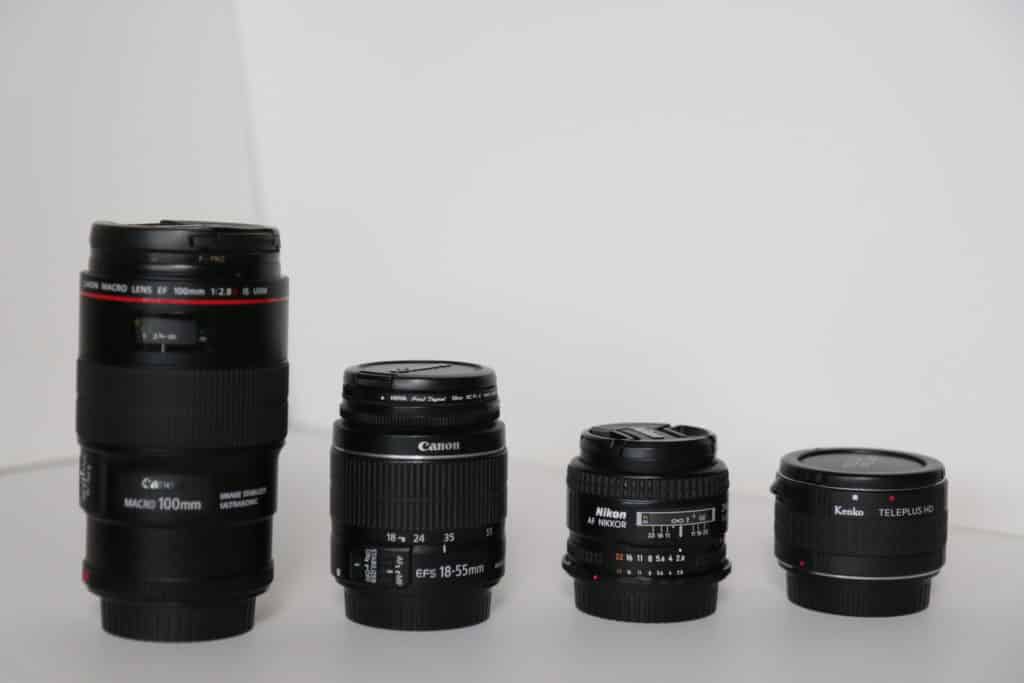
Crop Sensor vs Full Frame Lenses, Oh My!
I can only recommend the Canon 17-55mm f/2.8 if you have a camera that will take EF-S lenses.
For example, the BMPCC 6k will work wonderfully with the Canon 17-55mm f/2.8 because the BMPCC6k is a crop sensor camera with an EF lens mount. But you can’t use this lens if you’ve got a Canon full-frame camera.
Why not?
Well, you can’t put a crop-sensor lens on your full-frame camera. Instead, you’ll go with an EF lens. Have you noticed yet that this can get complicated, and there’s no single perfect answer? That’s because there are so many variables regarding lens choice.
But don’t worry, I’m going to cover everything you need to know about lenses so you can buy the best lens for video no matter what camera you have.
So keep reading!
And if you’re struggling with all the terminology, watch the video where I try to clear up some major lens confusions.
I teach filmmaking online, and I’ve also spent hours helping family members who are aspiring filmmakers and video creators. Across the board, everyone gets confused by lenses. It’s a complicated landscape.
So stick with me as we go through this together.
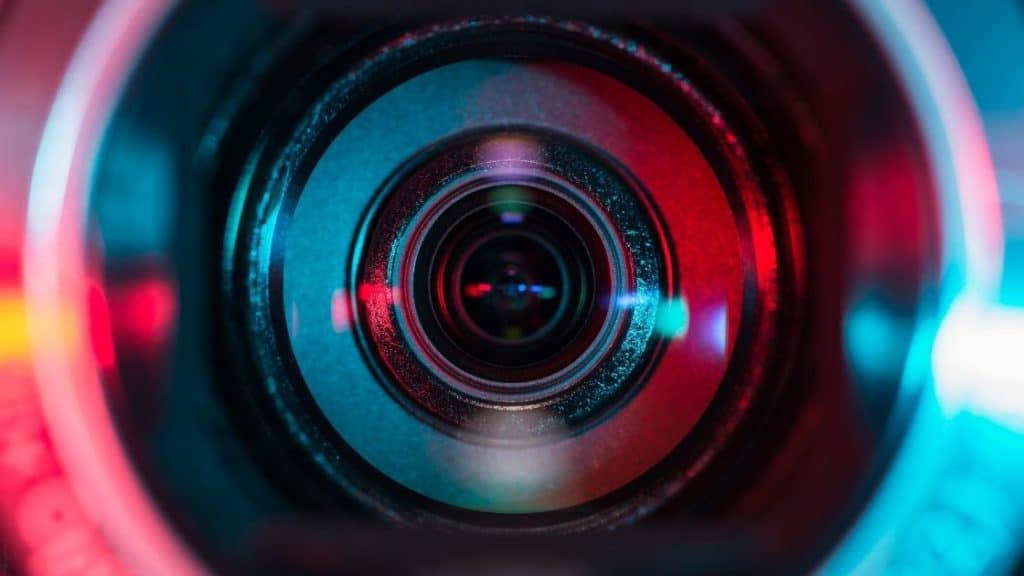
I Just Want the BEST Lens!
You’ve got a camera, or you’re thinking of buying one. And you want to know what the best lens for video is.
Great! But there’s one problem, the answer to this question is nuanced. Now, before I answer what the best lens for video is, I have a story for you. Stick with me. It’ll make sense in a minute.
Table of Contents
- 7-minute watch: The Best Lens for Video Hands Down
- What is a good lens for a video?
- Camera Lens Mounts
- 5 Things to Know About Lenses Before You Buy
- Role of Aperture
- Fast Sony and Canon Lenses
- Primes vs. Zooms
- Top Zoom Lenses for Main Brands
- Focal Length Explanation
- Top Prime Lenses
- For Sony Mirrorless Camera
- A-mount vs. E-mount
- Canon Lenses
- Tamron Lenses
- 50mm Lens Question
- Best Cine Lens
- How to Choose the Right Lens – Final Thoughts
- Don’t Get Sucked Into Lens Marketing
- Summary
I worked in fine dining for years.
For over ten years, to be exact. But my last restaurant job was the best one. The people were weird and hilarious, and the food was off the hook.
The staff also had an idiosyncratic love of burgers that took on a level of obsession I’d never seen before.
Starting at 11 pm every night, the servers and cooks would commence talking about burgers. All night long, we were serving high-end fares like uni mousse with squid ink brioche and BBQ quail with puffed sorghum and maple-glazed cornbread.
But at 11 pm, the craving for beef in a bun would hit.
At one point, this craving took on a new level of obsession.
Someone discovered an elusive burger truck that apparently had the BEST burgers in town.
It was one guy, in a truck, probably high AF, making retro burgers. Thin beef patties with iceberg lettuce on the perfect fluffy-yet-squishable white bun, finished with nostalgic plastic cheese and a pickle.
For a millennial yearning for simpler times, this was heaven. Especially after doing fine dining service all night long.
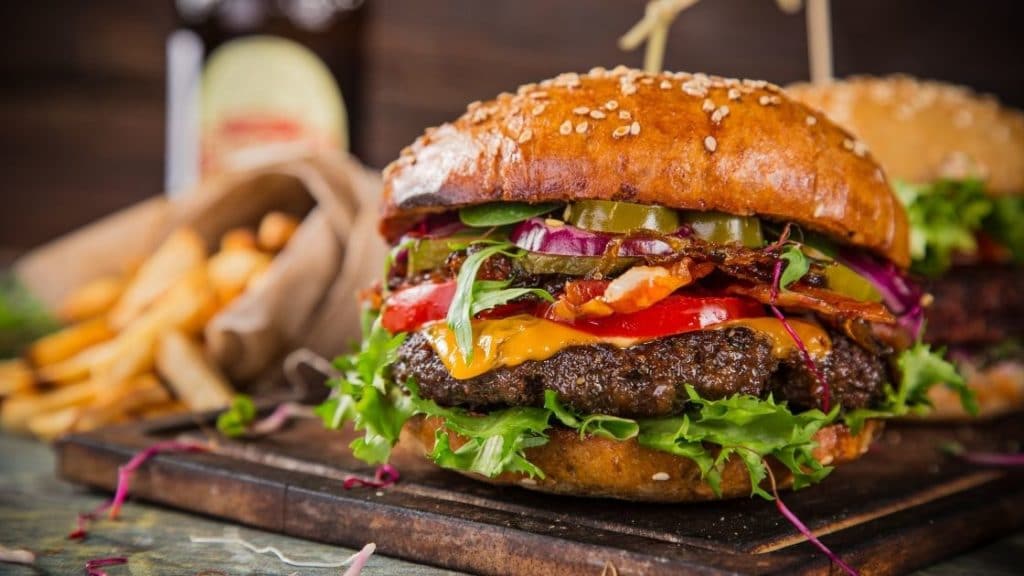
HOURS WERE SPENT WAXING ON ABOUT HOW THESE BURGERS WERE THE BEST IN TOWN.
But were they? Were they really the best?
Of course not!
There’s no such thing as best, dammit.
And yet, we still want it and fall for it every time.
This is the best croissant you’ll ever have. This is the best spa on the west coast. And this is the best hike you’ll ever go on. This is the best water bottle you’ll ever use! This is the best computer screen, the best hotel, the best bed, the best movie.
YOU GET IT. WE LOVE THE NOTION OF BEST.
Which is why I made you this video.
In this week’s video, I’m going to walk you through the BEST lenses for video.
7-MINUTE WATCH: THE BEST LENS FOR VIDEO, HANDS DOWN
Of course, I know that “best” is subjective. But when it comes to video, there are actually so few appropriate lenses for the general-interest video maker, that I can confidently share what I think are the best lenses out there.
What is a good lens for video?
First and foremost, when choosing a lens for video, you must know your camera’s lens mount.
Lenses are not interchangeable between camera brands. So if you’re using a Canon, you don’t want to buy Nikon or Sony lenses in most cases. There are also 3rd party lens manufacturers that make lenses for various camera brands. For example, Sigma creates lenses for Sony, Nikon, and Canon.
THUS, YOUR FIRST AND MOST IMPORTANT DECISION IS WHAT CAMERA YOU WANT.
From there, you decide on your lens based on the lens mount on your camera.
The lens mount is the metal element at the front of the camera body where you attach your lens. There’s a letter-based code for every lens mount.
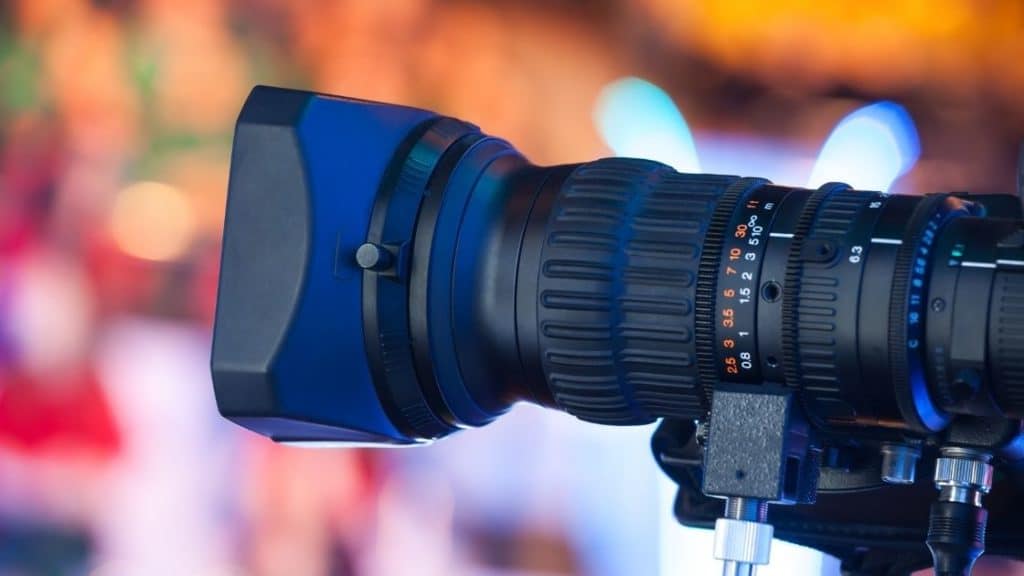
For example, Canon’s most common lens mounts are EF mounts, EF-S mounts, and RF mounts.
You can put an EF lens on a camera with an EF-S mount. But an EF-S lens won’t work on a camera with an EF mount. EF-S mounts are for crop sensor cameras, while EF mounts are for full-frame cameras.
If you own a starter Canon camera, then you have a crop sensor camera. This means you can buy EF-S lenses or EF lenses. Meanwhile, the RF lens mount is for Canon’s mirrorless cameras.
If you’re researching lenses for video, I’m going to assume you’ve got a camera body and a kit lens, and now you just need to buy the lens.
When you get seriously interested in shot sequencing, storyboarding, and making cinematic videos and films, you definitely need to have an array of lenses for video or a very good zoom.
But the most important thing to know before you do ANYTHING is what your camera’s lens mount is.
So let’s figure that out now.
Camera Lens Mounts
Camera Bodies | Lens Mounts |
Canon 90D | EF-S, EF * |
Canon Rebel Series | EF-S, EF |
Canon 6D | EF-S, EF |
Canon Mark 5D | EF |
Canon M Series | EF-M |
Sony a6700, ZV-E10, FX30, A7 IV | E, FE ** |
BMPCC 6k Pro | EF, EF-S *** |
BMPCC 6k G2 | EF, EF-S |
BMPCC 4k | MFT |
Panasonic Leica | Leica L |
Panasonic Lumix | MFT |
* EF lenses can go on crop-sensor and full-frame cameras. While EF-S lenses can only go on crop-sensor cameras with an EF-S mount. ** E lenses are made for Sony crop-sensor cameras. FE lenses are made for Sony full-frame cameras but you can use them on your crop sensor Sony as well. *** BMPCCs use Super35mm sensors which can often be covered by Canon EF-S lenses. I use an EF-S zoom on my BMPCC6k and it works fine. | |
Understanding Different Types of Lenses
There is more than one type of lens for video.
So I’m going to quickly break down the main types of lenses for video so we can make sure that you don’t end up with a very expensive bookshelf decoration that collects dust.
The good news is that if you accidentally buy the wrong lens, unlike camera bodies, your glass will retain much of its value if you keep it in pristine condition. You can easily resell a good lens if you don’t end up using it.
That said, let’s make sure you buy the right lenses in the first place!
5 Things You Need to Know About Camera Lenses for Video and Filmmaking
There are five main things that you need to consider when it comes to choosing the right lens for your camera:
2) The maximum aperture you need the lens to have (widest aperture, lowest f number)
3) Whether or not you need a zoom or a prime lens
4) The focal length or zoom range of the lens (measured in mm)
5) Image stabilization
Not sure what all this means? Don’t worry; I’m about to explain everything!
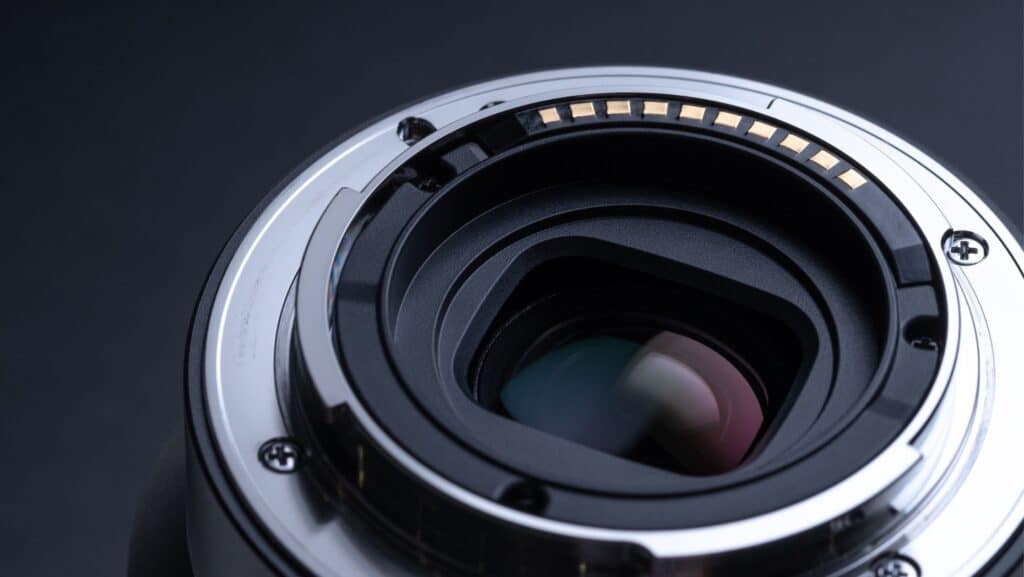
Okay, but how do you decide what lens to get once you’ve figured out your lens mount?
If you want the decision to be easy, get a high-quality standard zoom.
For video, it’s all about the zoom. You want to be able to quickly change up your framing by zooming in your lens. For video, many people prefer prime lenses (single focal length, no zooming) because the quality is higher. But for video, the zoom is where it’s at.
And yes, I will share all the relevant zoom lenses for videomakers below.
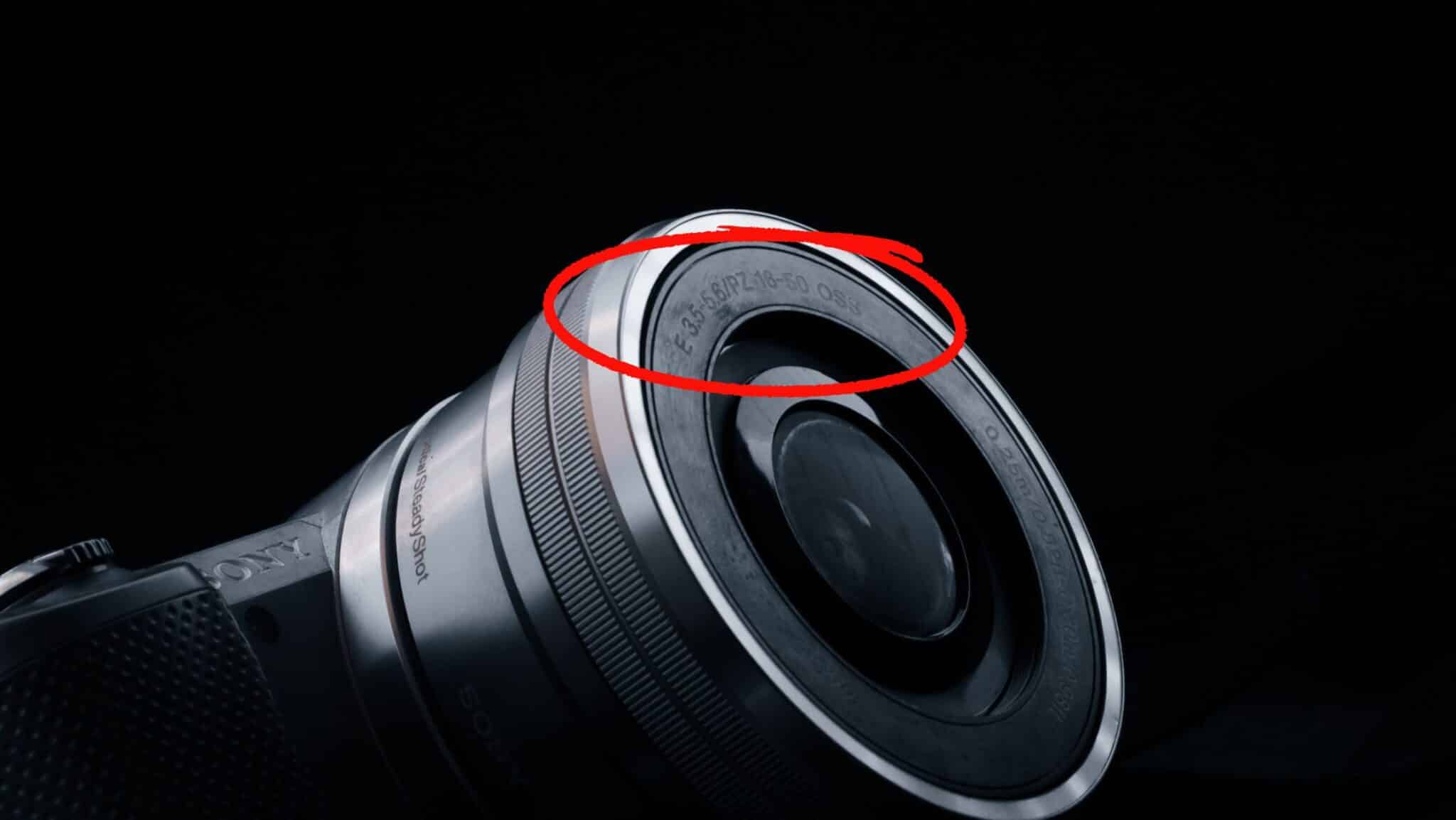
The Role of Aperture in Lenses: From Bokeh to Low Light Filming
The aperture is the spherical opening in a lens that lets more or less light through the lens and, thus, into the camera body. Your aperture is also called the iris. It’s measured in f-stops. F-stop numbers are NOT linear, which is why most people get pretty confused about aperture.
F-stops (i.e. f numbers) are “calculated by dividing the system’s focal length by the diameter of the entrance pupil.” ( + )
So from f/1.4 to f/2.0, you’re doubling the light that enters the lens by going down a FULL STOP. Thus, the wider your aperture (lower the f-number) more light you let in, and the more costly your lens will be.
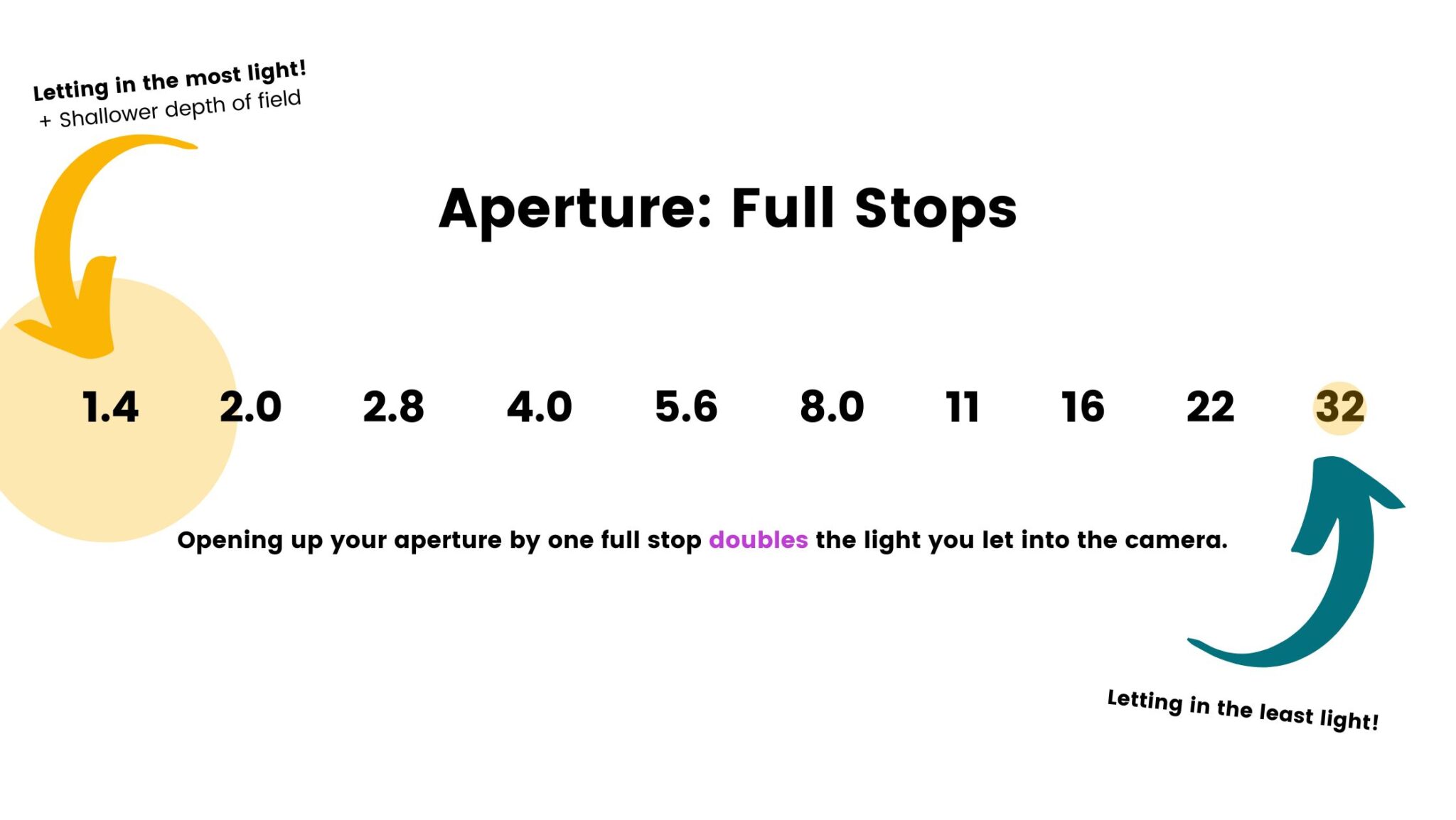
Here’s what you need to know about aperture:
1) Your aperture is measured in f-stops also called f numbers.
2) The lower the f-stop number, the more light will enter the camera.
3) The lower the f-stop number, the “faster” the lens is considered to be.
4) If you’re shooting in low light, i.e. indoors without studio lights, you need a fast lens.
5) Aperture is also partially responsible for giving you a blurry background for your videos, which is referred to as shallow depth of field.
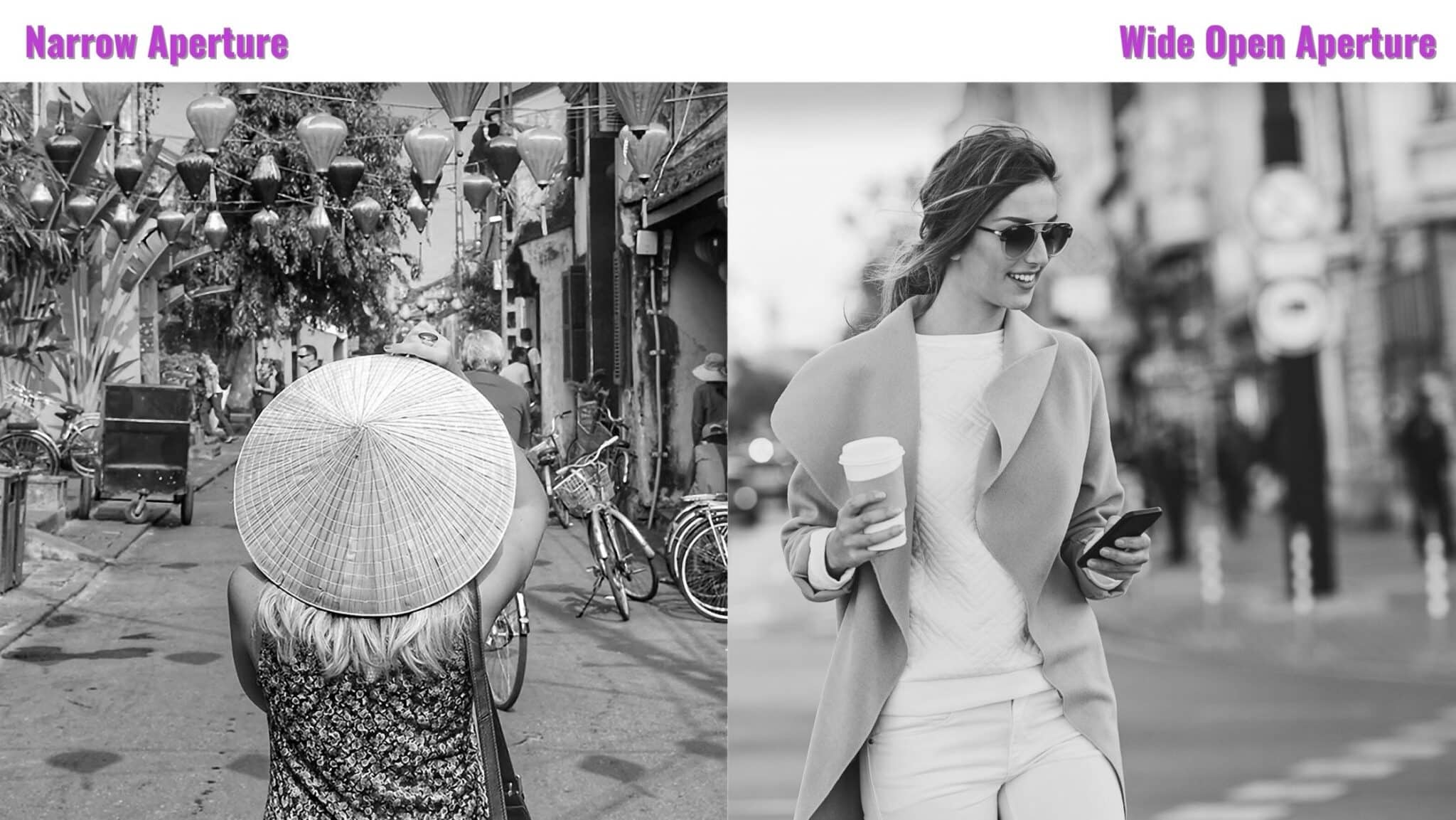
6) The faster the lens, the more expensive the lens. (But also, the more useful!)
7) Many lower-cost zoom lenses do not have a fixed maximum aperture—they have a variable aperture. This means that at certain focal lengths, you cannot open the aperture to its full diameter and let all the light you need into the camera. That’s not good if you’re shooting in low light.
8) Opening up your aperture by one full stop allows you to double the light entering into the lens.
9) Any lens that’s got an f-stop of 1.8 or lower is considered fast and will be great for low-light situations. However, f/2.8 is still fantastic. And f/4.0 is fine if you’re mostly shooting outside.
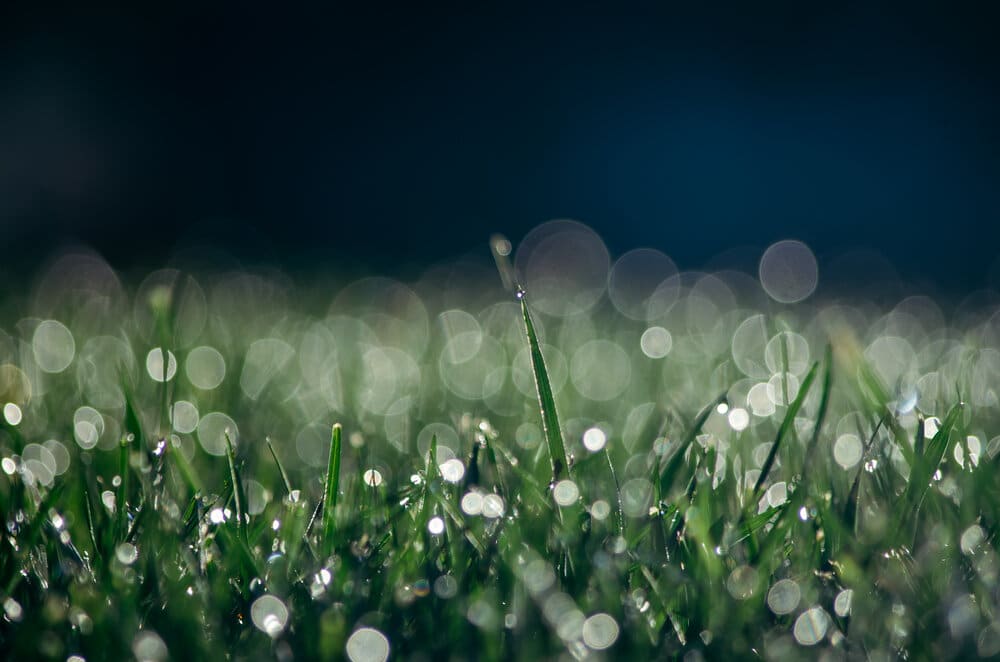
The Bokeh Situation
Bokeh is basically the lovely background blur that many filmmakers seek for certain for shots.
According to Nikon USA, “Bokeh is defined as the effect of a soft out-of-focus background that you get when shooting a subject, using a fast lens, at the widest aperture, such as f/2.8 or wider. Simply put, bokeh is the pleasing or aesthetic quality of the out-of-focus blur in a photograph.”
So if you want to film subjects for your videos and get that beautiful out-of-focus background required for most interviews, then you’re going to need a fast lens with a fixed maximum aperture of at least f/2.8 or wider.(+)
Fast Sony & Canon Lenses for Video
As mentioned above, a fast lens is f/2.8 or wider.
Here’s a list of all the top fast lenses for video organized according to lens mount and camera system. I’ve only included the lenses that have a FIXED maximum aperture because when you need a fast lens, it had better not be variable.
Great lenses that are f/2.8 or wider and perfect for video:
SONY
1) Sony FE 24-70mm f/2.8 GM Lens – For full-frame Sony cameras.
2) Sony E 16-55mm f/2.8 G Lens – For crop-sensor Sony Cameras.
3) Sigma 18-50mm f/2.8 DC DN Contemporary Lens for Sony E – Top 3rd party lens for crop-sensor.
4) Sigma 24-70mm f/2.8 DG DN Art Lens for Sony E – Top 3d party lens for full-frame.
5) Sigma 28-70mm f/2.8 DG DN Contemporary Lens for Sony E – Lighter 3rd party lens for full-frame.
CANON
1) Canon EF-S 17-55mm f/2.8 IS USM Lens – Best crop-sensor lens for Canon EF-S cameras.
2) Canon EF 24-70mm f/2.8L II USM Lens – Best full-frame lens for Canon DSLRs.
3) Canon RF 24-70mm f/2.8 L IS USM Lens – Best lens for R-series cameras.
4) Sigma 24-70mm f/2.8 DG OS HSM Art Lens for Canon EF – Best 3rd party lens for Canon DSLRs.
5) Sigma 24-70mm f/2.8 DG OS HSM Art Lens with Canon RF-Mount Adapter Kit – Best 3rd party lens with adaptor so you can use it on the Canon R-series cameras.
Prime vs. Zoom: Which is the Best Lens for Video?
In almost all cases, a great zoom lens should be the first lens you invest in for your video production needs.
Fixed focal length lenses, also called prime lenses, are not the best choice for video creators because they are too limiting.
If you’re exclusively making short narrative films, investing in a kit of cinema lenses is fine. But if you’re not only shooting narrative films, a zoom lens is an absolute must. And it has to be high quality. There’s no sense in buying a low-end zoom. That’s what most kit lenses are, anyways.
Top Zoom Lenses for Video and Filmmaking by Brand
SONY FE
Sony FE lenses are specifically designed for full-frame Sony cameras.
But you can use them just fine on your crop sensor Sony. Meanwhile, the E lenses are for crop-sensor Sony cameras. You cannot put an E-mount lens on a full-frame camera.
FE 24-70mm f/2.8 GM – Standard zoom for a full-frame camera, great for video, good in low light.
E 16-55 mm f/2.8 – Perfect standard zoom for your crop-sensor Sony camera, good in low light.
18-135mm E f/3.5-5.6 – If you have a crop-sensor camera and are on a strict budget, this is for you.
CANON EF, EF-S, R, EF-M
Make sure you get the right lens for your Canon camera. There are four lens mounts you’ll find on modern Canon cameras.
Canon EF-S 17-55mm f/2.8 IS USM Lens – Perfect standard zoom for crop-sensor DSLR.
Canon EF 24-70mm f/2.8L II USM Lens – Perfect standard zoom for full-frame DSLR.
Canon RF 24-70mm f/2.8 L IS USM Lens – Perfect standard zoom for mirrorless R-series.
Canon EF-M 18-150mm f/3.5-6.3 IS STM Lens – Standard zoom for M-series with budget in mind.
FUJI
FUJIFILM X lenses are designed for Fujifilm’s X-series crop-sensor cameras.
While the XF lenses are designed to be used with either full-frame or crop-sensor cameras.
Sigma 18-50mm f/2.8 X – Good zoom for a crop-sensor Fujifilm camera. Good in low light.
Tamron 17-70mm f/2.8 X – Good zoom for a crop-sensor camera. Longer than the Sigma.
FUJIFILM 16-55mm f/2.8 XF – Great zoom lens for your full-frame or crop-sensor. Fast lens.
FUJIFILM 18-120mm f/4 XF – Good zoom lens if you’re starting out and want to experiment with a longer lens.
BLACKMAGIC
Remember that for most Blackmagic cameras, you’re going to be using either EF or micro thirds lenses, as those are the predominant lens mounts.
So refer to the list above with the EF and EF-S lenses or below for the MFT lenses. If you have the BMPCC4k, you have a MFT lens mount. If you have the BMPCC6k, yo have a Canon EF lens mount.
MICRO FOUR THIRDS (MFT)
Panasonic Leica 12-35 f/2.8 – Perfect standard zoom for a crop sensor camera with a 2x crop. But also great for a camera with a 1.5x crop. Fast lens. This would be my choice if I were on a budget and wanted to keep my gear simple.
Panasonic Leica 10-25mm f/1.7 – Combine this lens with the 25-50mm to get a full range of wide to medium shots when shooting. With an ultra fast aperture, this is a very solid combo that will give you great imagery for years.
Panasonic Leica 25-50mm f/1.7 – This gives you a nice range for either crop sensor or full-frame cameras. If you have a crop-sensor camera, you’ll want to pair this with a shorter zoom or prime to cover all your bases.
Olympus 8-25mm f/4 PRO & Olympus 40-150mm f/2.8 PRO – With these two lenses you’ll have covered almost everything you need. But you’ll have a funny gap in the middle where you might want to add 35 mm primes.
Panasonic Lumix Vario 14-140mm f/3.5-5.6 – If you’re on a budget, then this lens will do the trick! You can experiment with a wide range of focal lengths without breaking the bank.
Panasonic Lumix S PRO 24-70mm f/2.8 Lens – Premium lens, perfect for full-frame MFT cameras.
Focal Length Fun Times
If you’re totally confused about focal lengths, that’s okay!
Here are the basics that’ll make you a focal length pro:
1) The “longer” the lens, the higher the focal length number.
2) A long lens refers to a lens that is more “zoomed in.”
3) For a full-frame camera, anything 80mm or more is considered a long lens.
4) A standard zoom lens for a full-frame camera is 24-70mm. That’s a great place to start.
5) If you have a crop sensor camera, i.e. most mid-range mirrorless and DSLRs, a standard zoom lens will be 17-55mm.
6) 80mm is a standard portrait lens if you’re shooting with a full-frame camera.
7) 50mm is the equivalent of what the human eye naturally sees.
8) 24mm and under is considered a wide-angle lens if you’re shooting with a full-frame camera.
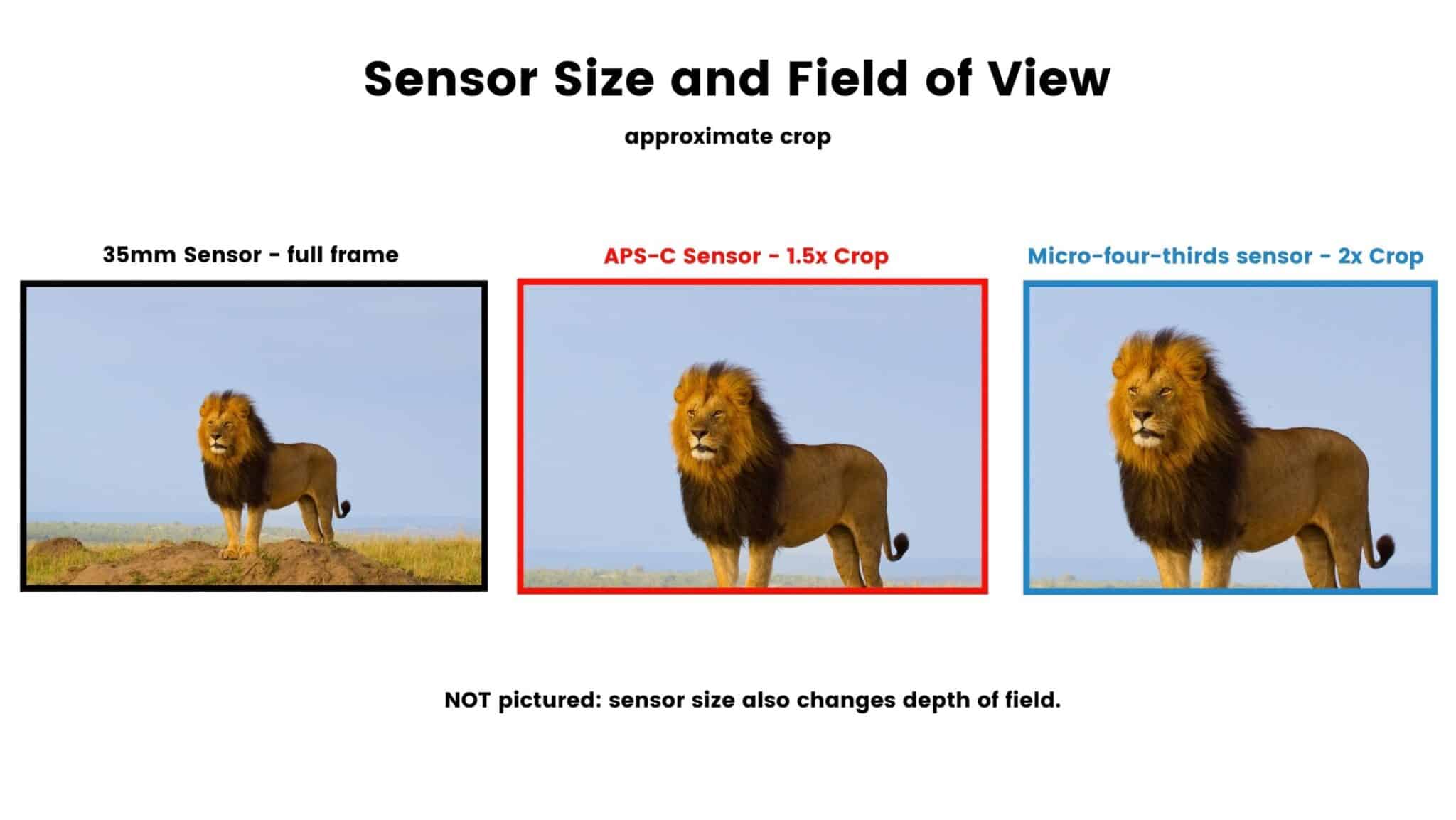
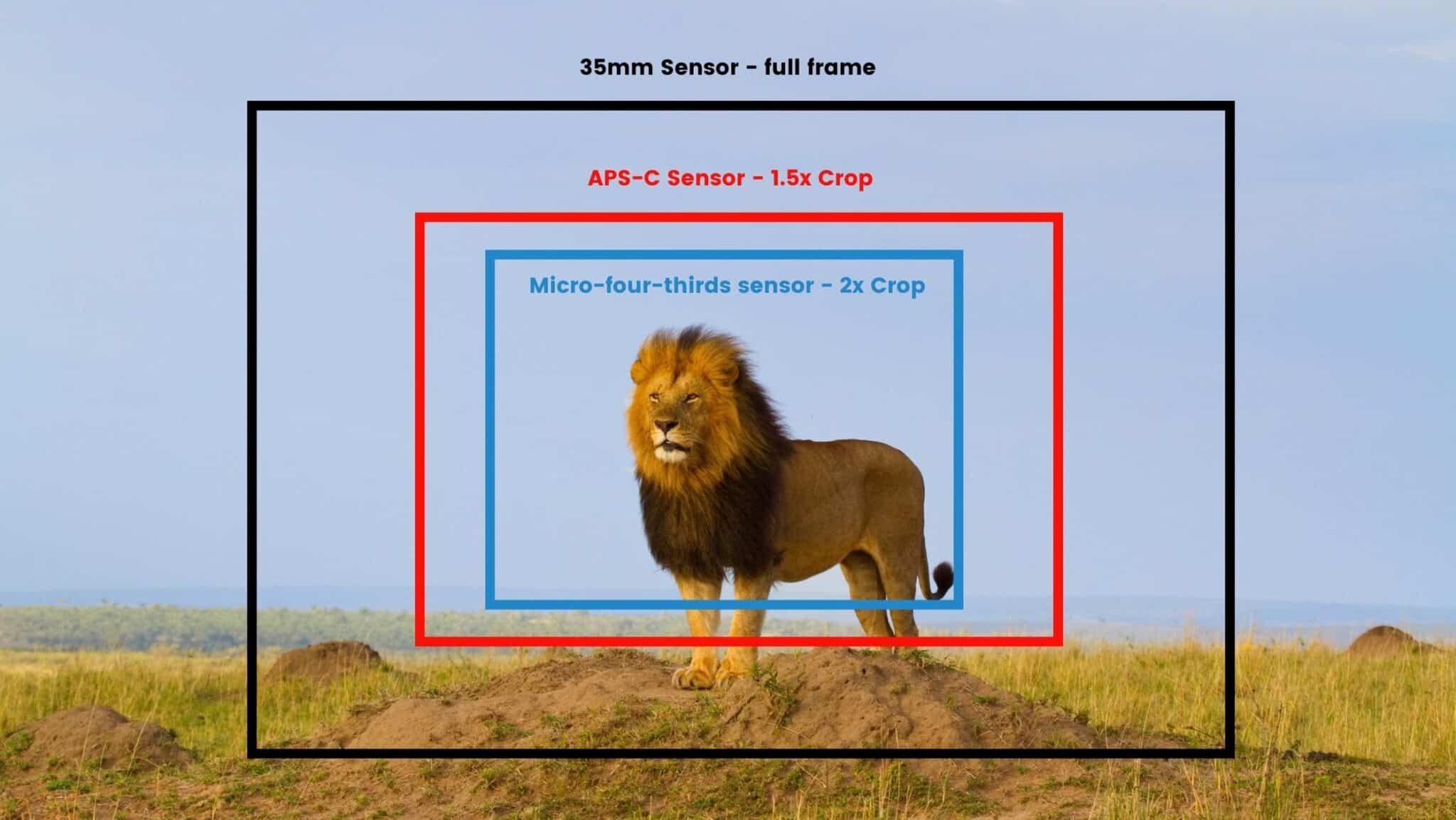
Best Prime Lenses for Video Based on Focal Length
Again, make sure that you know your lens mount before you buy a lens!
So while these may be the best lenses for this focal length, you need to ensure you buy the lens with the right mount for your camera.
11mm & 14 mm
For wide angle shots interior and exterior.
Rokinon 14mm T3.1 Cine DS Lens for Canon EF Mount – Wide angle cine lens.
Sony FE 14mm f/1.8 GM Lens – Fast, wide angle lens for photo and video.
Sony E 11mm f/1.8 Lens – Built for crop-sensor cameras not full-frame.
24 mm
For medium and medium wide shots.
Rokinon 24mm T1.5 Cine DS Lens for Canon EF Mount – Good quality starter cine lens.
Sony FE 24mm f/2.8 G Lens – High quality 24mm lens with wide max aperture.
Sony FE 24mm f/1.4 GM Lens – The pricier version of the 24mm with a wider max aperture for low light and beautiful blurry backgrounds. GM means it’s built for life.
35 mm
For medium shots.
Rokinon 35mm T1.5 Cine DS Lens for Canon EF Mount
Canon EF 35mm f/2 IS USM Lens – I have this lens and love it for how lightweight it is.
Sony E 35mm f/1.8 OSS Lens – For crop-sensor cameras.
Sony FE 35mm f/1.4 GM Lens – For full-frame cameras. Great lens, built to last. Great in low light.
50 mm
For mediums and medium close ups.
Sigma 50mm f/1.4 DG HSM Art Lens for Canon EF – Premium glass. Fast i.e. good in low light.
Canon EF 50mm f/1.4 USM Lens – Cheaper but not as good as the Sigma.
Rokinon 50mm T1.5 AS UMC Cine DS Lens for Canon EF Mount
85 mm
For close ups and extreme close ups.
Canon EF 85mm f/1.8 USM Lens – Great for close up shots.
Sony FE 85mm f/1.8 Lens – For full-frame cameras. Fast lens perfect for close ups and portraits.
Sony FE 90mm f/2.8 Macro G OSS Lens with UV Filter Kit – If you want to do macro shots, this is for you!
If you’re going to be shooting narrative work and nothing else, just save up and get the Rokinon Cine Kit.
I’m going to assume that if this is your plan, you have the BMPCC6k, in which case the EF lens mount will work for you.
But ONLY do this if you’re going to be doing crew-based filmmaking. You don’t want to be messing around with a bunch of prime lenses if you’re a video shooter doing run-and-gun work or a solo filmmaker.
Answer THIS Lens Question Before You Buy
DO YOU NEED THE LENS TO BE FAST BECAUSE YOU’RE GOING TO BE SHOOTING IN LOW LIGHT?
If yes, get a lens with a fixed maximum aperture of f/2.8 or faster.
Look for f/2.8 or a LOWER number in the specs. And make sure it’s fixed not variable. A variable aperture would be written like this: f/2.8-5.0
Now, let’s break this whole situation down by brand.
Again, I know this can be confusing. But keep going! By the time you get to the bottom of this page, you should feel pretty clear about what is the smart thing to buy.
Sony Lenses: An Overview
From doing plenty of lens research, I’ve found that the Sony lens system seems the most confusing at first. So let’s clear the cobwebs and ensure that you’re buying the RIGHT lens if you’ve got a Sony camera.
Sony E-Mount Lenses
If you have a crop-sensor Sony, then you may wish to buy one of their more affordable lenses which are made to go with cameras that have a crop factor of 1.5x.
But if you want to go premium, you can. The Sony FE lenses, will work on your crop-sensor Sony.
Sony E 16-55mm f/2.8 G Lens with Lens Care Kit – Standard zoom for a crop-sensor camera.
Sony E 18-135mm f/3.5-5.6 Lens with UV Filter Kit – Best budget option, but not ideal due to variable max aperture.
Sony G Master Lenses – FE
GM stands for Gold Master and is the highest quality Sony lens.
Sony FE 24-70mm f/2.8 GM Lens – Perfect standard zoom for video.
Sony FE 70-200mm f/2.8 GM OSS II Lens – Perfect telephoto.
Sigma Lenses for Sony Cameras
Sigma 18-50mm f/2.8 DC DN Contemporary Lens for Sony E – For crop-sensor cameras this is the perfect standard zoom.
Sigma 24-70mm f/2.8 DG DN Art Lens for Sony E – For full-frame cameras this is the ideal standard zoom. Art lenses are made to last (but can be heavy). If you’re going pro, get this lens.
Sigma 28-70mm f/2.8 DG DN Contemporary Lens for Sony E – This is a lower cost option that is also nearly half the weight of the Art lens.
A-Mount vs. E-Mount: What’s the Difference?
A-mount lenses are for Sony cameras that have a mirror in the camera body, whereas E-mount lenses are designed for mirrorless cameras.
You can use any A-mount lens on your E-mount camera with the right adaptor.
The E-mount lenses that are for mirrorless cameras won’t work with a camera that has a mirror because the mirror will hit the lens!
So while you can use an A-mount lens on an E-mount camera WITH an adapter, you CANNOT put an E-mount lens on an A-Mount camera body with an adapter. ( + ) I don’t go into A-mount lenses in this article as they are not the ideal lens to buy for your Sony mirrorless camera. If you have one already, get an adaptor. If not, buy an E or FE lens.
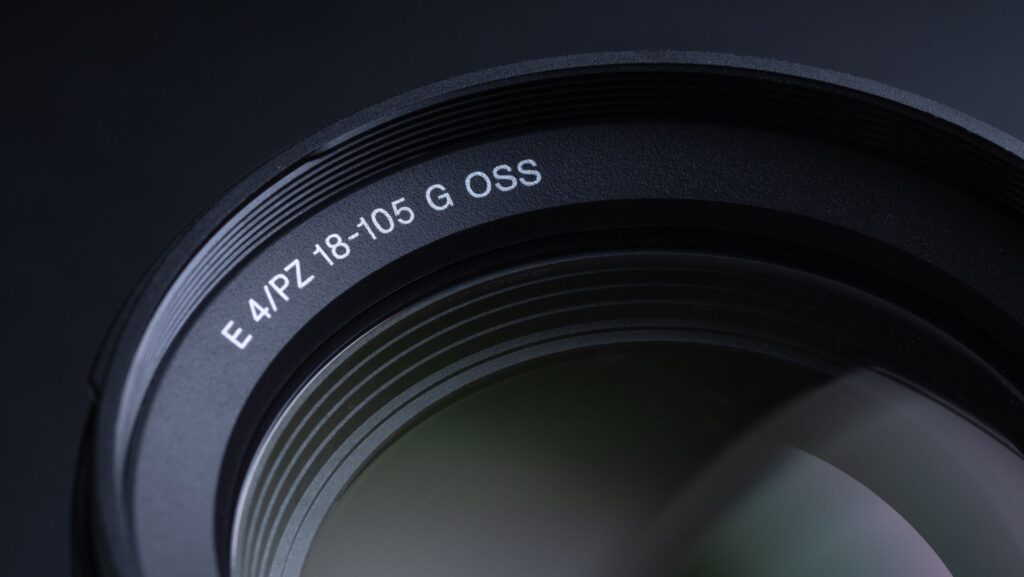
Canon Lenses: What You Need to Know
The first thing you need to know about Canon lenses is that not all of them have image stabilization.
It’s only image stabilized if you see the letters IS in the lens listing. Image stabilization is useful for handheld shooters and photographers. If you’re a run-and-gun shooter, then you typically need an IS lens unless you always use a monopod or some form of stabilization.
If you’re always shooting on tripods and gimbals, you’re OK to buy any lens, whether it’s IS or not.
The Best Canon Lenses for Video and Filming
First, if you have a crop sensor camera i.e. most mid-range DSLRs, then the Canon 17-55mm will usually be the best choice for you. While if you have a full-frame Canon, the 24-70mm lens will almost always be your best lens choice for video. Canon has many outstanding lenses. If you have a Canon, read the post on the best Canon lens for video that I wrote recently.
Canon EF Zoom Lenses for DSLRs
Canon EF 24-70mm f/2.8L II USM Lens – Best choice due to focal length and aperture.
Canon EF 24-105mm f/4L IS II USM Lens – If you’re on a budget or need a longer zoom and don’t need to shoot in low light without studio lighting, this will do the trick.
Canon EF 11-24mm f/4L USM Lens – Wide angle premium zoom for those who are ready to spend.
Canon EF 70-200mm f/2.8L IS III USM Lens – If you need a serious telephoto lens!
Canon EF-S Lenses for Crop Sensor DSLRs Like the 90D
Canon EF-S 17-55mm f/2.8 IS USM Lens – The ideal standard zoom for your crop-sensor Canon.
Canon RF Lenses for Mirrorless Cameras
Canon RF 24-70mm f/2.8 L IS USM Lens – The perfect standard zoom for a full-frame mirrorless.
Canon RF 24-105mm f/4 L IS USM Lens – Lower cost, but not as fast. So think carefully about this.
Canon RF 70-200mm f/4 L IS USM Lens – Premium telephoto.
Canon M Lenses for Mirrorless Cameras
Canon EF-M 18-150mm f/3.5-6.3 IS STM Lens – Standard zoom + telephoto. This would be my pick if I were just starting out and using a Canon M-series.
Canon EF-M 15-45mm f/3.5-6.3 IS STM Lens – Standard zoom.
Canon EF-M 11-22mm f/4-5.6 IS STM Lens – Wide angle zoom.
Canon EF-M 55-200mm f/4.5-6.3 IS STM Lens – Telephoto.
E Mount vs. EF-S Mount: What’s the Difference?
E-mount lenses are designed for full-frame Canon cameras.
However, they can be used on any EF-S camera body without an adapter. On the other hand, EF-S lenses can only be used on crop-sensor cameras that have an EF-S mount. They don’t work on full-frame Canon cameras because they won’t cover the entire sensor.
Tamron Lenses: Quality with Affordability
Why Consider Tamron for Video and Filming
The main reason someone would choose Tamron would be to save money. They aren’t the best lenses on the marketplace, but if you need a fast lens and can’t splurge on a Sony lens, you might need to purchase a Tamron lens. They are also available for Canon and other brands, but I’m only providing options for the Sony E-mount because I don’t see the need in the other cases.
Top Tamron Lenses Typically Under $1200
Tamron 17-70mm f/2.8 Di III-A VC RXD Lens for Sony E
Tamron 28-75mm f/2.8 Di III VXD G2 Lens (Sony E)
Tamron 70-180mm f/2.8 Di III VXD Lens for Sony E
Understanding Sensor Size and Lens Compatibility
Sensor size affects your lens choice.
The main thing you’ve got to understand about sensor size and lens compatibility is that a lens made for a crop-sensor camera won’t work on a full-frame camera becase it won’t cover the entire sensor. Thus, you’ll get black vignetting around the edge of your image. Also, if you use a lens that’s designed for a mirrorless camera on a camera that has a mirror, you’ll damage the mirror and lens.
But also, you don’t have to worry about that because the wrong lens won’t fit on your camera anyway.
Specialty Lenses and Filming Techniques
The 50mm Lens: A Staple in Filmmaking
50mm lenses are a staple in filmmaking, video production and photography.
The angle of view of a 50mm lens, when used with a full-frame camera, is very close to that of the human eye. In other words, how you see the world and how a 50mm lens sees the world is similar.
However, many beginner video creators have found themselves buying the wrong lens because they think they need a 50mm prime.
Please note: a 50mm prime lens isn’t the best to purchase unless you’re exclusively making narrative films using a full-frame camera. You might end up having this as part of your suite of lenses, but it’s certainly not the best or first investment you should be making as a video creator or filmmaker.
And remember that the angle of view of a 50mm lens on a full-frame camera vs a crop sensor camera is not the same. All focal lengths will appear to be longer i.e. more zoomed in when they are combined with a crop sensor camera.
Using Wide Angle Lenses for Dynamic Shots and Handheld Shooting
When shooting handheld video, the wider the lens, the less wobbly and shakey your footage will appear.
The longer your lens, the more zoomed in your angle of view, the more obvious any shake will be. And while there might be times that you want manic wobbles in your footage, you mostly want there to be a subtle kinetic or dynamic feeling rather than full-on shaky footage.
For someone who wants to create interesting dynamic handheld shots, investing in a wide-angle lens in addition to a standard zoom lens might be a good idea.
The Best Cine Lens
What’s the absolute best cine lens?
If you were going to get just ONE lens to make cinematic videos and short films, what should it be?
This is just my opinion…but I don’t think buying a cine lenses makes sense unless you’re going to use them ALL the time. They’re inconvenient for solo shooters and video creators.
Instead, I rent high-end (aka $5000+) cine lenses if I really need them.
But for my own kit, I use a quality zoom because you can use it so many ways. You get way more bang for your buck as a solo filmmaker, video creator, or indie cinematographer when you use premium zoom lenses.
If you’re convinced you need a cine lens, get a few Rokinon lenses. Otherwise, pick one of the premium zooms below:
Canon RF 24-70mm f/2.8 L IS USM Lens – For Canon mirrorless R series.
Canon EF 24-70mm f/2.8L II USM Lens – For Canon EF and EF-S lens mounts.
Sony FE 24-70mm f/2.8 GM Lens – For Sony E mount cameras.
Panasonic Lumix S PRO 24-70mm f/2.8 Lens – For Micro Four Thirds lens mounts.
FUJIFILM XF 16-55mm f/2.8 R LM WR Lens – For Fujifilm cameras.
How to Choose the Right Lens: Final Thoughts and Recommendations
First and foremost, you’ve got to know what your camera’s lens mount is before you buy.
From there, figure out how fast your lens needs to be i.e. what’s the minimum aperture you want. Then figure out what frame sizes you’ll need to shoot and the corresponding focal lengths you’ll need.
Decide if a zoom lens or set of primes is best based on your shooting style.
Then just pick the best lens that you can afford. Be clear about your budget, and spend it.
No, really, once you’ve figured out your actual needs, set a max budget and spend all of it. Your lens makes up such a big part of your image quality that it doesn’t make sense to cheap out. You will never EVER regret buying an outstanding lens.
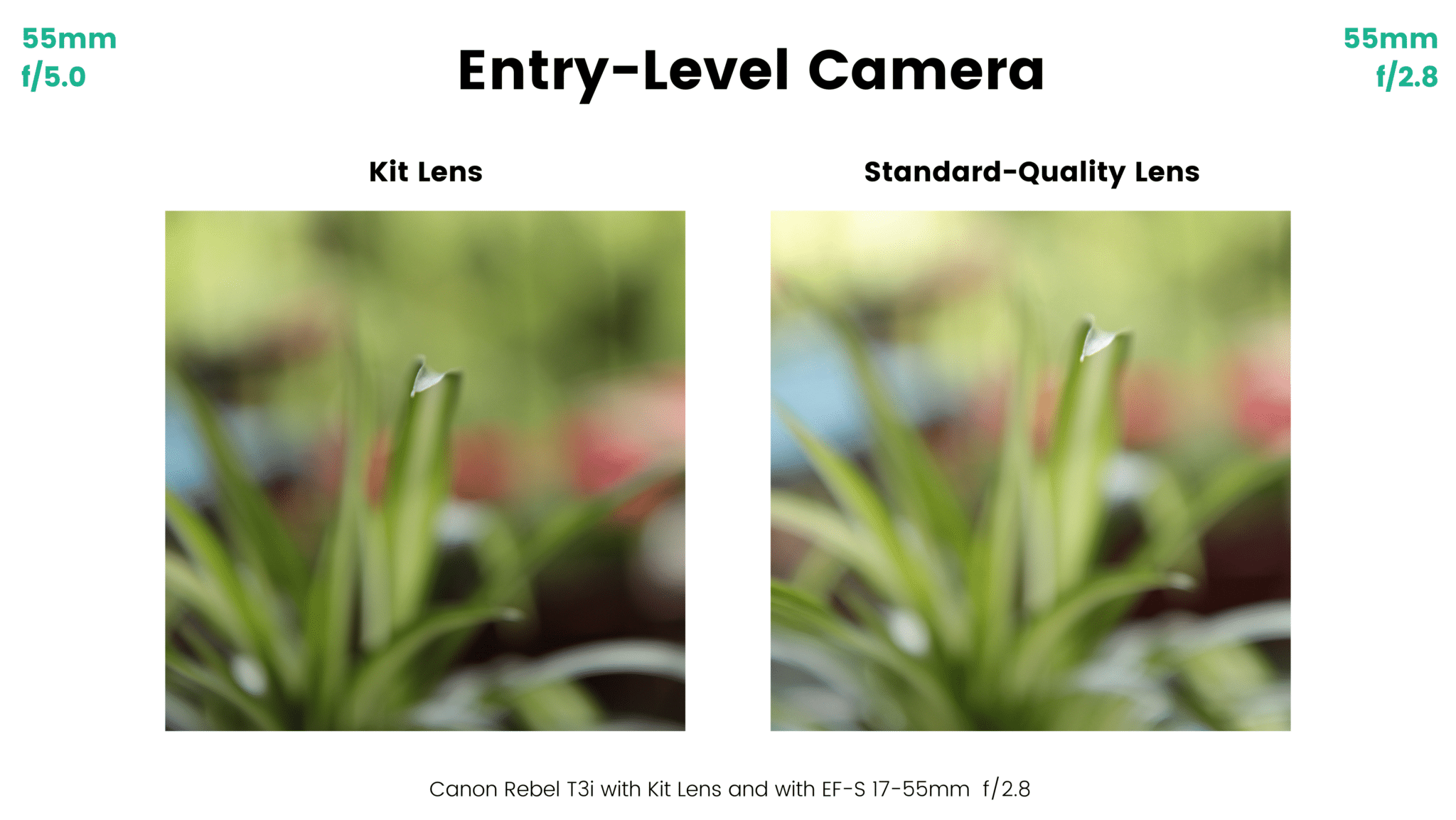
That said, you still need to have a budget and stick to it. Don’t break the bank, my friend.
You might need a tripod, some filters, a gimbal, more batteries, or a good audio recording system. So you can’t sacrifice everything just for the lens.
So your next step?
Decide on your max budget, and then get yourself a kick-ass lens!
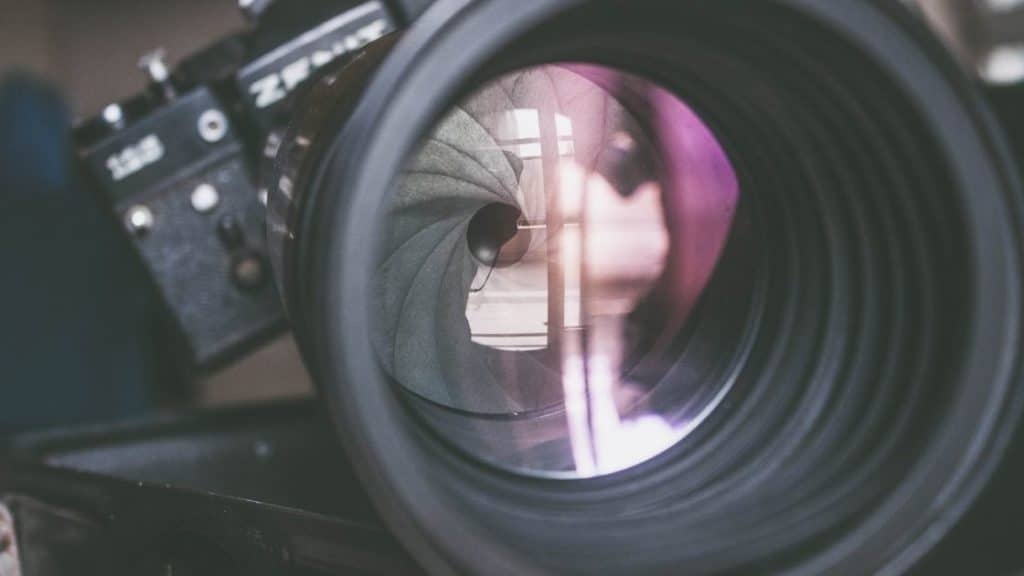
WHAT FOCAL LENGTHS DO YOU NEED?
In other words, how much zoom do you need?
If you’re going to do bird videography or sports videos, you need a serious zoom and a serious tripod. But if you’re going to do more typical shoots, then a standard zoom will do the trick.
For a full-frame camera, 50mm is the equivalent of what the human eye sees.
But for a camera with a crop factor of 1.6x (which is most Canons) then a 30mm lens would give you a field of view (frame) that’s close to what the human eye would see. Thus, the standard zoom for a crop sensor camera is often 17-55 mm, while for a full-frame camera, the standard zoom is usually 24-70 mm.
DO YOU NEED YOUR LENS TO HAVE IMAGE STABILIZATION?
Image stabilization is usually required by people shooting a lot of handheld video.
With Canon lenses, you’re looking for the IS symbol, which indicates image stabilization. But for other brands, image stabilization is called something different. Now, if you just want some easy answers, I’ve got those for you too!
Final Top Recommendations:
These are the lenses that I recommend for the different types of cameras that most video creators and solo filmmakers use to get started.
FOR SONY MIRRORLESS CAMERAS
Sigma 18-50mm f/2.8 Contemporary Lens for Sony E | Under $1000
Sony E 16-55mm f/2.8 G Lens | Under $1500
Sony FE 24-70mm f/2.8 GM Lens | Under $2000
FOR CANON CROP SENSOR & FULL-FRAME DSLRs
Canon EF-S 17-55mm f/2.8 IS USM Lens | Under $1000
Canon EF 24-70mm f/2.8L II USM Lens | Under $2000 (Premium glass, but not image stabilized)
Sigma 24-70mm f/2.8 DG OS HSM Art Lens for Canon EF | Under $1200
Sigma 18-35mm f/1.8 DC HSM Art Lens for Canon EF | Under $1000
FOR CANON MIRRORLESS
Canon RF 24-70mm f/2.8 L IS USM Lens | Under $2500
Canon RF 24-105mm f/4 L IS USM Lens | Under $1500
For M-Series Only: Canon EF-M 18-150mm f/3.5-6.3 IS STM Lens | Under $500
FOR MICRO FOUR THIRDS
The GH5 series has a crop factor of 2x so to get the equivalent of a 50mm lens, you’ll need a 24mm lens.
Panasonic Leica DG Vario-Elmarit 12-35mm f/2.8 ASPH. POWER O.I.S. | Under $1000
Panasonic Lumix G Vario 14-140mm f/3.5-5.6 II ASPH. POWER O.I.S. Lens | Under $500
FOR BMPCC 6K with EF MOUNT
The BMPCC has a crop factor of 1.558x. So you need a 30mm (approx) lens to get the equivalent of a 50mm. A 17-55mm zoom lens will cover all the major shot sizes you need.
Canon EF-S 17-55mm f/2.8 IS USM Lens | Under $1000
Sigma 18-35mm f/1.8 DC HSM Art Lens for Canon EF | Under $1000
Sigma 14-24mm f/2.8 DG HSM Art Lens for Canon EF | Under $1500
Sigma 24-70mm f/2.8 DG OS HSM Art Lens for Canon EF | Under $1200
For my work, I use the Canon EF-S 17-55mm f/2.8 for most normal circumstances.
I’ll use the 35mm f/2.0 if I need something small and light for running around. Finally, I use the Canon 100mm f/2.8 macro lens for extreme close-ups and more creative random work.
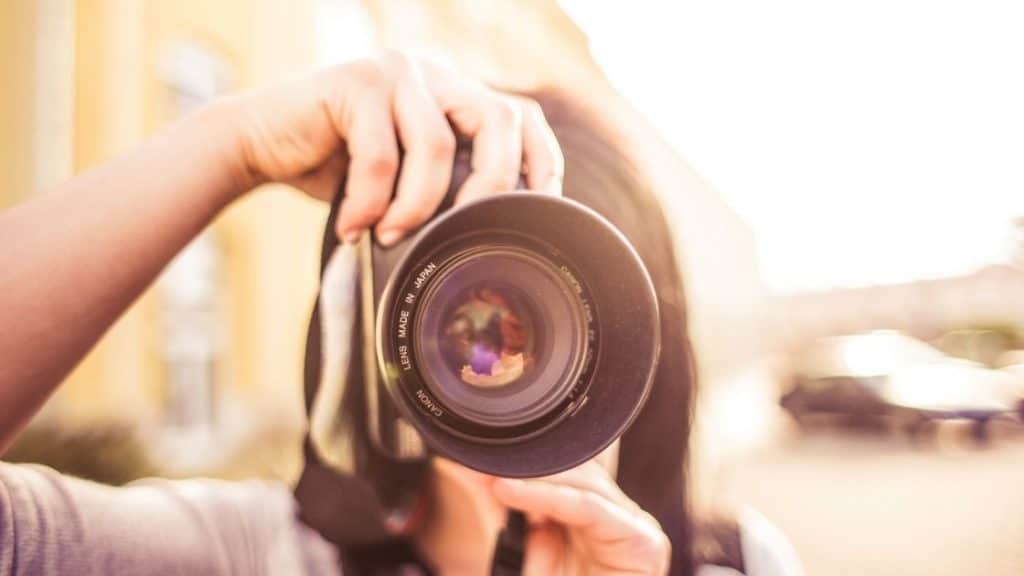
What lenses should every videographer have?
Every videographer should have a standard zoom that gives them a 50mm equivalent with some room on either end.
So if your camera’s crop factor is 2x, your zoom should be at least 12-35mm. If your crop factor is 1.6x, your zoom should be at least 18-55mm.
Is a 50mm lens good for video?
A 50mm lens, or its equivalent for the crop factor of your camera, is good for video because it can capture a standard frame.
But it’s limiting because you’re stuck with just one field of view. You can’t zoom. A 50mm lens on a full-frame camera gives you a field of view roughly equivalent to what the human eye sees. However, if your lens has a crop factor of 2x, then a 50mm prime lens will be the equivalent of a 24mm lens and isn’t the right purchase for video work. It will be too wide for many general applications.
In most cases, a 50mm prime lens is not the first purchase you should make if you’re doing video.
You should buy a zoom lens that gives you the equivalent of a 50mm lens with some room on either end. In other words, you should buy a standard zoom for your camera’s crop factor.
Does your lens affect video quality?
Your lens will affect the quality of your videos.
First, a low-quality lens cannot give you the sharpness and color saturation that you may be hoping to get. Your lens is one of the most important factors in determining the quality of your image. So much so that I’d rather have a cheap camera and a great lens than vice versa.
Many people say that your lens should cost as much as your camera.
Some say your lens should cost 2x what you paid for your camera. This is just to illustrate how important the lens is. That said, I use a lens that cost half the price of my camera and while I know I’ll upgrade at some point, my videos are not suffering.
This is because the camera I’m using has outstanding color science and dynamic range.
So as long as I use this camera with a decent lens, I can capture footage that’s quite beautiful. Will I get a better lens in the future? Sure! But if you’re a video creator, you also have to invest in sound gear and your editing system. In other words, you can’t blow your entire budget on a lens.
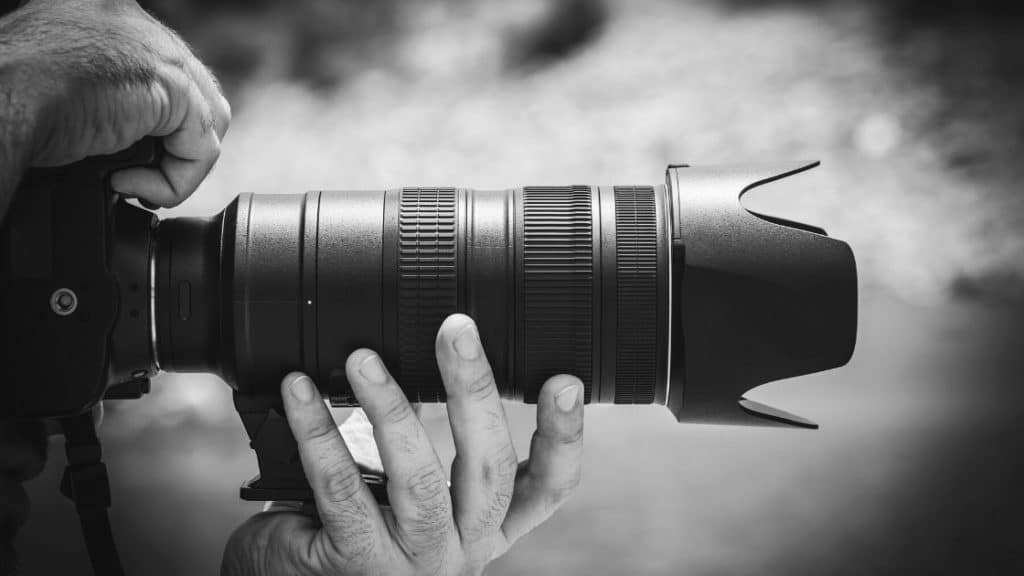
Best DSLR Lens for Video: Canon
The best lens for creating videos on a Canon DSLR is the Canon EF-S 17-55mm f/2.8 IS USM Lens.
It has an f-stop of f/2.8. It’s image stabilized. The glass is reasonably sharp. The zoom is good. The focus is good. If you’re working with an APS-C camera (i.e. it has a crop factor) then this is a good lens for video.
If you’re working with a full-frame lens, then the best DSLR lens for video will be either the Sigma 24-70mm f/2.8 DG OS HSM Art Lens for Canon EF, the Tamron SP 24-70mm f/2.8 Di VC USD G2 Lens for Canon EF, or the Canon EF 24-70mm f/2.8L II USM Lens.
These lenses are all solid lenses, so you should base your purchase on budget and whether you have a crop factor or not.
Don’t Get Sucked Into Lens Marketing
The only way to avoid getting sucked into the lens marketing and buying the wrong thing is if you know your specs.
So decide what you want to be shooting and what you need to achieve those goals, and THEN buy a lens. Or if you just want something fast, buy a standard zoom.
That’s it! You’re ready to either start your research or buy something today.
Summary of Key Points
That was a lot of lens information! Here’s a quick review of the main things you need to remember when buying a lens for video.
- You need to know your camera’s lens mount before you buy a lens.
- Decide how fast you need the lens to be i.e. the fixed max aperture (f-stop number).
- Choose a zoom lens if you’re going to be doing videography or run and gun shooting.
- Don’t buy a 50mm prime lens if you’re focusing on video.
- Know the crop factor of your lens before you buy anything.
- Choose a lens that will help you create what you want to create.
- Finally, don’t get sucked into the lens marketing madness. Buy what suits your needs, not what influencers are hocking you in their YouTube or TikTok videos.
More Gear Articles
⭐ The Absolute Best Camera for Beginners
⭐ Lens Mount Guide for Cameras
Learn Filmmaking and Get the Gear Guide
If you’re interested in learning filmmaking, check out the Solo Filmmaking Mentorship Program I created for aspiring filmmakers and video creators. It usually goes live once per year. So I recommend getting the Story Envelope Filmmaking letter which comes out a couple of times per month. That way, you can get filmmaking tips for free and find out when the filmmaking course is going live again.
Also, before you go, grab the Solo Filmmaking Gear Guide and Checklist for Beginners.

About the Author
Hi! I’m Colette Nichol. I’m a solo filmmaker and story strategist based out of rainy Vancouver, Canada. I’ve been making videos and micro films for small businesses and global brands since 2014.
Plus, I LOVE to help aspiring filmmakers pursue their dreams and start making films. This blog is designed to help you gain the knowledge you need to become a filmmaker.
If you want more, get on the waitlist for the Story Envelope Academy Solo Filmmaking Mentorship Program. It opens up one time per year and is the best way to become a filmmaking or video pro fast!
CLICK HERE to get on the solo filmmaking mentorship waitlist.